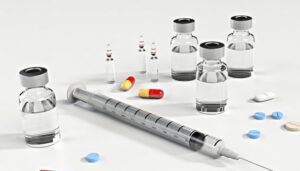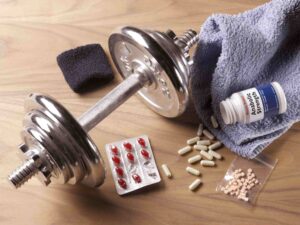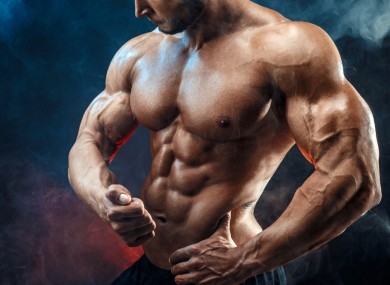Lastest News
Anabolic Steroids
What are Anabolic steroids?
Anabolic steroids, also known more properly as anabolic-androgenic steroids (AAS), are steroidal androgens that include natural androgens like testosterone as well as synthetic androgens that are structurally related and have similar effects to testosterone. They are anabolic and increase protein within cells, especially in skeletal muscles, and also have varying degrees of androgenic and virilizing effects, including induction of the development and maintenance of masculine secondary sexual characteristics such as the growth of facial and body hair. The word anabolic, referring to anabolism, comes from the Greek ἀναβολή anabole, “that which is thrown up, mound”. Androgens or AAS are one of three types of sex hormone agonists, the others being estrogens like estradiol and progestogens like progesterone.
Anabolic steroids are drugs that help the growth and repair of muscle tissue. They are synthetic hormones that imitate male sex hormones, specifically testosterone.

AAS were synthesized in the 1930s, and are now used therapeutically in medicine to stimulate muscle growth and appetite, induce male puberty and treat chronic wasting conditions, such as cancer and AIDS. The American College of Sports Medicine acknowledges that AAS, in the presence of adequate diet, can contribute to increases in body weight, often as lean mass increases and that the gains in muscular strength achieved through high-intensity exercise and a proper diet can be additionally increased by the use of AAS in some individuals.
How are they used?
- Anabolic steroids can be injected or taken as a tablet.
Anabolic Steroids Types

Anabolic Steriods can be classified under the two categories
Oral Steroids
- Anadrol (oxymetholone)
- Anavar (oxandrolone)
- Dianabol (methandienone )
- Winstrol (stanozolol)
- Restandol (testosterone undecanoate)
Injectable Steroids
- Deca-Durabolin (nandrolone decanoate)
- Durabolin (nandrolone phenpropionate)
- Depo-Testosterone (testosterone cypionate)
- Agovirin (testosterone propionate)
- Retandrol (testosterone phenylpropionate)
- Equipoise (boldenone undecylenate)
Side effects on anabolic steroids
There is a wide array of serious side effects associated with the abuse of anabolic steroids; an example listing can be found here.4 Steroid use can alter the normal hormonal production in the body. Most side effects can be reversed if the drugs are stopped, but some, such as a deepened voice in women may persist. Data on long-term side effects primarily come from case reports and not from well-controlled, long-term epidemiological studies, which might be more reliable.4
Common side effects with anabolic steroids may include:
- Severe acne, oily skin, and hair
- Hair loss
- Liver diseases, such as liver tumors and cysts
- Kidney disease
- Heart diseases, such as heart attack and stroke
- Altered mood, irritability, increased aggression, depression or suicidal tendencies
- Alterations in cholesterol and other blood lipids
- High blood pressure
- Gynecomastia (abnormal development of mammary glands in men causing breast enlargement)
- Shrinking of testicles
- Azoospermia (absence of sperm in semen)
- Menstrual irregularities in women
- Infertility
- Excess facial or body hair (hirsutism), a deeper voice in women
- Stunted growth and height in teens
- Risk of viral or bacterial infections due to unsterile injections

Are Anabolic Steroids Addictive?
Users of anabolic steroids can become both physically and psychologically dependent upon the drugs, as evidenced by a drug-seeking behavior, continued use even with adverse effects, and physical withdrawal symptoms such as mood swings, fatigue, restlessness, loss of appetite, insomnia, reduced sex drive, and steroid cravings. Severe withdrawal can lead to depression and possible suicide. Depressive symptoms can persist for up to one year after the user stops taking the steroid.
Supportive treatments and medication interventions may be needed for severe anabolic addiction. Medications that have been used for treating anabolic steroid withdrawal allow the natural hormonal system to restore. Other medications target specific withdrawal symptoms. For example, antidepressants may be prescribed to treat depressive episodes and analgesics, such as acetaminophen or ibuprofen, may be used for headaches and muscle and joint pains. Some patients may also undergo behavioral therapies.

